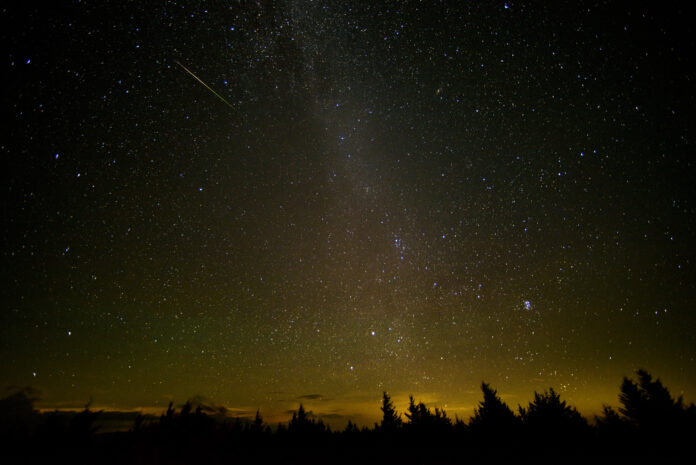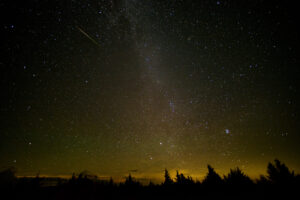
BY HANNES THUM

It was early. I’m not sure what time it was, but it was still dark out. This time of year, on the other side of the winter solstice and with the days rapidly lengthening on both ends, darkness is slowly getting harder to come by. It was close to the new moon, and the moon wasn’t up anyhow.
I had stepped outside and just barely closed the door behind me when something caught my eye. I looked up and had one of those moments where all I could do was stare. If I was still connected to my arms and legs or to my heart and lungs, I couldn’t have known it at the time—this was one of those times where I may as well have been just eyeballs, retinae, and brain, floating there.
What I seemed to be looking at was a long, brilliant streak of light hanging high up in the night sky, crossing a great arc above me. I watched as it changed colors, pulsed brightly and then faintly, and then slowly faded away over the course of maybe thirty seconds or so. By the time I remembered that I had a mouth and remembered that I had a wife and used my mouth to tell my wife to come look, it was gone.
The explanation that jumps out is that I had just barely missed seeing a meteor, a shooting star, traversing our upper atmosphere, and that what I saw was its fading trail. Well, if so, then the fading trail alone was brighter than any meteor I have personally seen. The meteor itself must have been astounding. Makes me wish I had stepped outside about a second earlier.
In the days after, I asked around if anybody else had seen what I had seen. Nobody seemed to have. Nothing. Nope. Nada. If anybody else noted what I saw, I don’t know about it. And I have wondered a few times since if I saw what I saw or am even remembering it correctly. Human memory is, after all, an incredibly fallible and plastic medium. Especially when I haven’t finished my coffee.
The image of the streak in the sky began to remind me of coming across animal tracks that I can’t quite identify (which happens a lot). Clearly, something walked by and made the tracks, but… what animal? I can’t tell, sometimes.
Science is based, at its core, on observation. The selling point of science has always been that if you make enough diligent and objective and precise observations about something in the universe, you’ll eventually arrive at some achievable and objective and precise conclusion about how things work. The entire assumption about science is that if you watch something carefully enough, knowledge will reveal itself.
But, we are imperfect observers. We miss a great deal more than we find. And what we find is limited by our ability to describe and document it. The universe sidesteps even our most deliberate attempts to catalogue it.
Or, at least, that’s how I usually feel.
